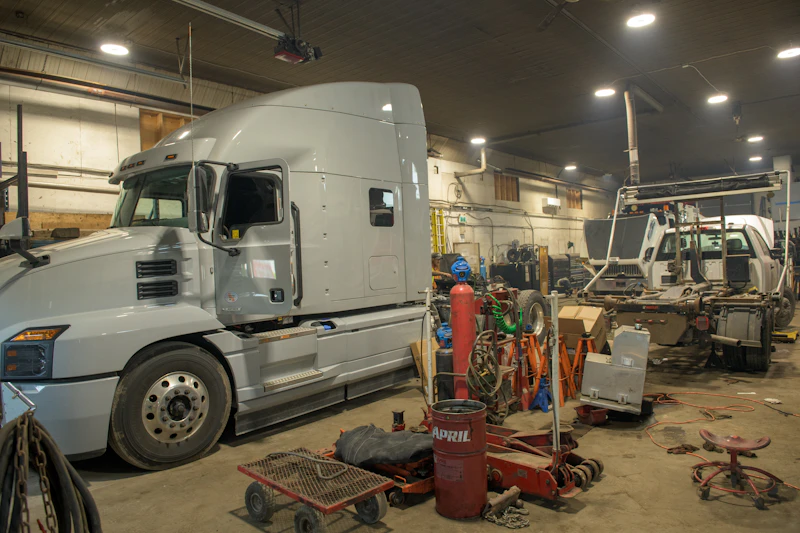How to Winterize Your Diesel Pusher RV: A Step-by-Step Guide

It’s starting to get cold outside, which means winterizing your diesel pusher RV should be on your to-do list. Failing to prepare for colder climates can wreak havoc on your RV's systems, cutting into your bank balance and travel plans.
Don’t know where to start? No worries—that’s what we’re here for. On this page, we’ll walk you through the key steps to winterizing your diesel pusher RV so it’s well-maintained for long-term use.
Step 1 – Drain and Protect Your Plumbing System
The colder weather causes water to freeze, so those left in your plumbing system can cause pipes to burst. Drain your fresh water tank, grey water tank, and black water tank by following these three steps:
- Open the drain valves and turn on the faucets to release water from the system.
- Once drained, close all valves and bypass the water heater to avoid unnecessary antifreeze filling.
- Next, it’s time to pump RV antifreeze through your pipes. Use a water pump conversion kit to introduce the antifreeze into your system. Begin with the farthest faucet and work your way closer to the pump. Make sure pink antifreeze comes out of each faucet before moving on.
Pro Tip: Don’t forget the toilet and the shower! These are easy to forget but are also at risk of freezing.
Step 2 – Protect the Diesel Engine
Winter temperatures can be brutal on your engine if it isn’t properly prepared. Stay on top of engine maintenance with these steps:
- Top off your fuel tank and add a diesel fuel stabilizer: This helps to prevent condensation from forming in the tank, which can lead to water contamination and fuel line freezing.
- Check your coolant system: Make sure the antifreeze is a proper 50/50 mix of coolant and water. If the coolant has lost its potency, drain it and refill it with a fresh mixture. This ensures the coolant won't freeze and damage your engine’s internals.
- Change the oil: Cold weather thickens the oil, making it harder for the engine to start. A fresh oil change with the correct viscosity for cold temperatures will help your engine run more smoothly.
Step 3 – Battery Care
Winter temperatures are batteries' worst nightmare. They can lose 30% of their charge in the cold, and if left unattended, they can freeze and crack.
- Disconnect the batteries: Store them in a warm, dry place. If you're leaving them in the RV, consider using a battery tender to maintain a full charge throughout the winter.
- Inspect the terminals for corrosion: Clean them with a wire brush if necessary. Apply a thin layer of dielectric grease to help protect against moisture.
Check out another one of our articles and learn more about keeping your diesel pusher’s electrical systems road-ready.
Step 4 – Tires and Suspension
Your tires will also need attention before winter sets in. Cold weather can reduce tire pressure, causing them to deflate.
- Check tire pressure and inflate them to the manufacturer’s recommended PSI.
- Check the tread depth and make sure they’re also at the manufacturer's recommended levels.
- Pour your RV on tire pads or blocks to prevent the tires from rotting or cracking during storage. This removes the weight off the tires and prevents flat spots from forming.
- Lubricate the suspension components and ensure the air suspension, if applicable, is deflated to avoid damage.
Step 5 – Exterior Protection
Protecting your RV’s exterior is just as crucial as caring for the engine and plumbing. Freezing rain, snow, and wind can cause damage to the exterior surfaces if not properly maintained.
- Wash and wax the exterior of your RV. A good coat of wax will help shield the body from dirt, debris, and moisture.
- Cover your RV with a breathable RV cover. Avoid using tarps, as they can trap moisture and lead to mold and mildew formation.
- Check the seals around windows and doors. If they’re cracked or worn, replace them to prevent moisture from seeping in.
Step 6 – Interior Preparations
Finally, take care of the interior. You’ll want to leave it in top condition so it’s ready to go once the weather warms up.
- Remove all perishables from the refrigerator and pantry to avoid pests and mold.
- Clean the interior thoroughly and leave moisture absorbers in strategic locations to prevent mold growth.
- Ensure ventilation by cracking a window slightly to allow airflow, especially if storing the RV long-term.
Final Winterization Checklist
Before you say goodbye to your RV for the season, run through this quick checklist to ensure everything is in tip-top shape.
- Plumbing system drained, and antifreeze added, Diesel fuel stabilized, Coolant topped off, Fresh oil change, Battery disconnected and stored, Tires inflated and suspension lubricated, RV washed, waxed, and covered, Interior cleaned and moisture absorbers placed
Final Thoughts
Winterizing your diesel pusher RV doesn’t have to be a daunting task. By taking the necessary precautions outlined above, you’ll not only protect your RV from the harsh winter elements but also extend its lifespan. When spring rolls around, you’ll be able to hit the road with confidence, knowing your RV is in perfect working order.
Need help to winterize your diesel pusher RV in Pearland, TX? Contact Saviors Repair today for professional assistance and to ensure your RV is ready to tackle the winter season.


.webp)
.webp)